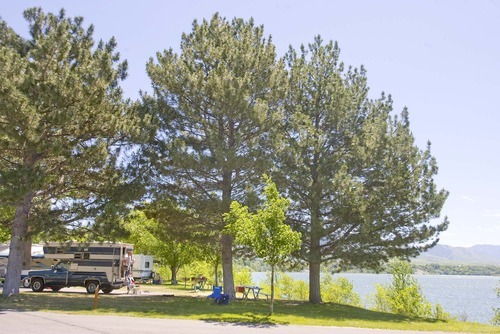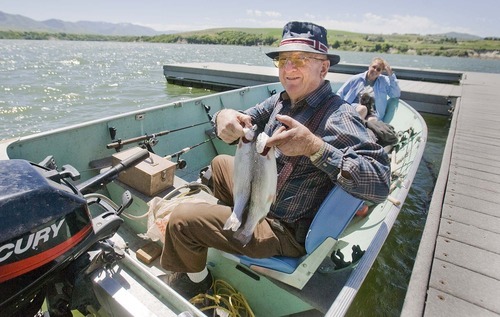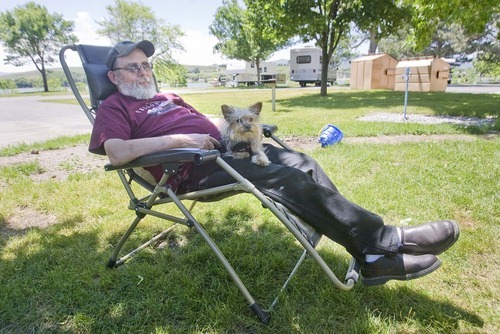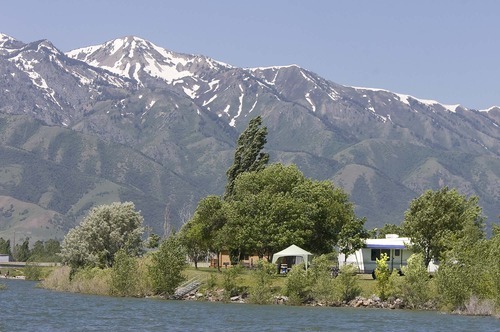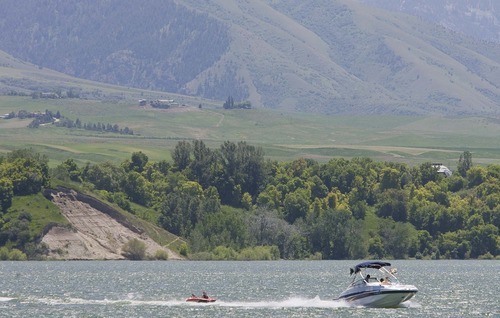This is an archived article that was published on sltrib.com in 2011, and information in the article may be outdated. It is provided only for personal research purposes and may not be reprinted.
Small rural state water recreation parks such as Huntington, Hyrum or Steinaker are among eight rural Utah State Parks that require close to a million dollars in taxpayer dollars each year.
Despite the high costs, to a boater from Emery County, a business owner in Vernal or a angler in Cache Valley, these parks are almost essential. At Huntington Reservoir, for example, park manager Dan Richards guesses that 98 percent of day use comes from Emery and Carbon Counties.
Marcus Batty of Basin Sports in Vernal said Steinaker and Red Fleet State Parks provide a major part of recreation for locals who enjoy year-round fishing and summer boating and water skiing. Selling fishing supplies, tubes and wakeboards make up a big part of his store's summer business.
Paul Eastman of Ridley's Market in Hyrum said the little state park in his community helps business tremendously.
But as Utah State Parks struggle with major budget cuts, should state taxpayers be asked to subsidize what are primarily local recreation areas? Or should park leaders and legislators be looking to share expenses with counties or — as was the case in 2002, when the state gave Minersville Reservoir to Beaver County to operate — turn these small parks over to local governments?
Agency director Mary Tullius says those are difficult questions.
"The Legislature is going to have to decide," she said. "Are those parks important enough in local communities for either the state to continue to operate them, for the local government entity to run them or a combination of the two?"
She said the parks are often an economic engine for rural economies and improve the quality of life for the people who live there.
And it's not like state parks haven't tried to cut expenses at these rural parks. When the park manager at Starvation retired recently, he wasn't replaced. One manager will oversee Red Fleet, Steinaker and Starvation.
Richards and three other full-time employees manage Millsite, Huntington and Scofield. Millsite, a hugely popular staging ground for ATV riders, boaters and golfers in the summer months, is operated mostly by seasonal part-time employees.
Jeremy Shaw, who recently left Hyrum to take over Antelope Island, said he and one other full-time employee were expected to manage Hyrum. On a typical summer Saturday there, the boat ramp parking lot is full from 9 a.m. until dark — requiring 12-hour shifts.
They are also in charge of enforcing boating laws on Newton, Porcupine and Cutler Reservoirs, and on 200 miles of nearby ATV trail, and groom miles of snowmobile trail in the winter. He said hardly a weekend passes without an OHV accident happening somewhere in Cache County.
"It's almost impossible to cover any park's law enforcement with one person," he said. "Public safety is where you don't want to sacrifice. When the public's best interest is at heart, safety is a primary issue and you need that coverage."
In other words, even if local government took over management, state park law enforcement rangers would still be responsible for boating and OHV laws.
Tim Smith, southeastern regional manager for Utah State Parks, said that while it might seem easy and more efficient to consolidate managers' positions at parks located close to one another, it can take a heavy toll on the depleted staffs. He worries the state may be taking advantage of some of its employees, especially if seasonal workers hired during the summer months don't work out.
"There are days when we are not going to be there," he said. "And it stresses our employees, who end up working extra time."
Richards would like to promote special events to increase visitation and revenue at his three parks, but says he lacks the time and staff. Still, he recognizes the value of these parks to rural residents.
"State parks are not operated like a private facility," he said. "Neither are county parks. The swimming pool in Castle Dale and the golf courses don't make money, but they are built to provide recreation opportunities. In Salt Lake, if you get rid of something, there is an alternative around the corner. If you get rid of Huntington, there is no other like it."
Twitter: @tribtomwharton —
Small Utah state 'water-based' parks
Figures from 2010
State park Visitors Subsidy per visitor
Escalante 42,390 $3.28
Huntington 56,451 $3.69
Hyrum 63,278 $2.18
Millsite 32,556 12-cent profit
Starvation 62,258 $2.61
Red Fleet 27,824 $2.31
Steinaker 72,739 46 cents
Scofield 79,076 $2.79
Source: Utah Legislative Auditor General



